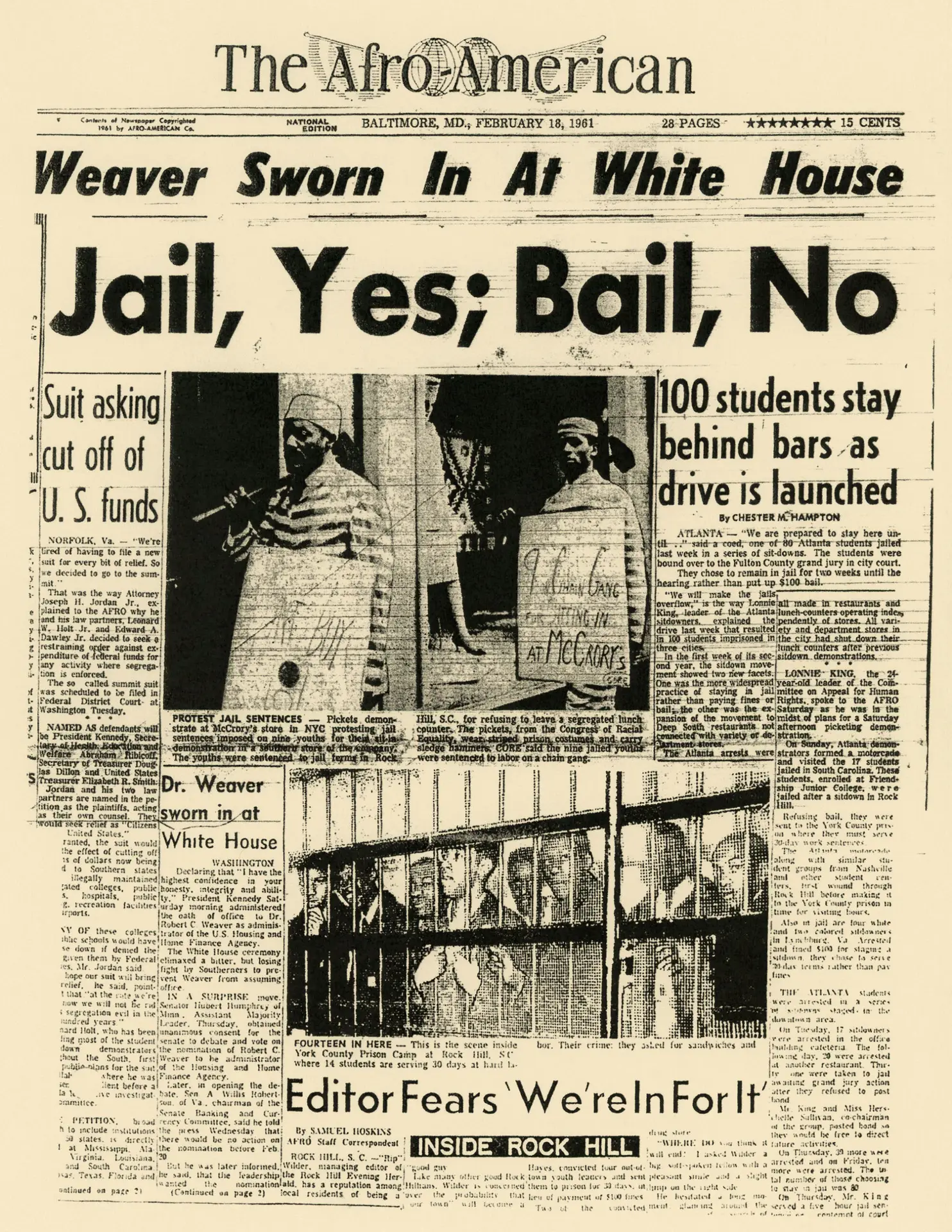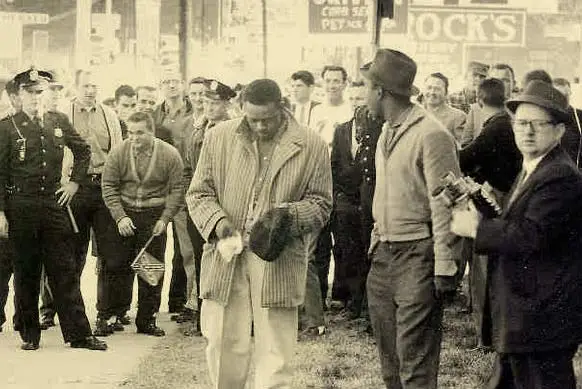February 18, 1961
The Friendship 9, at this point, had served more than half of their time at the Prison Camp before the authorities found a reason to put them in solitary confinement. The reasons are not as clear as the newspapers said as to why they were confined, but none of the reasons were reasonable. Some newspapers […]
February 1-2, 1961
After the ten were arrested, they spent the night in the Rock Hill jail before they were put on trial on February 1, 1961. Reverend Cecil Ivory, who was the Rock Hill representative for the NAACP, took it upon himself to get the students a well-respected African American attorney to represent them. He got one […]
January 31, 1961
Full of nerves and anxiety, the guys kept their heads up as they passed by cop cars lining the road to downtown Rock Hill. They were on a mission, they were going to make a statement for racial equality. Grabbing picket signs and joining the other protestors, they rallied the courage before stepping into McCrory’s […]
Press

February 10, 1961: The Rock Hill Herald, which was and still is the local newspaper, took a very biased stance when covering the Civil Rights events especially when covering the Friendship 9. A woman named Margaret H. Gregg wrote a letter to the Rock Hill Evening Herald that was surprisingly published. She wrote in opposition […]
Leaders

February 7, 1961: NAACP president for Rock Hill, Reverence Cecil Ivory, held a meeting where 300 people of York County came together to hear from Civil Rights speakers. The speakers were SNCC founder Ella Baker, CORE field secretary James T. McCain, and US National Student Association activist Connie Curry, who was white. Because of this […]
Students

February 6, 1961: Four large-name SNCC members were inspired by the bold actions of the Friendship 9 and decided to join their efforts and do the same thing. They came to Rock Hill, protested at Mcrory’s, were arrested and refused bail. The two men that were involved were Charles Sherrod and J. Charles Jones, and […]
Students

The danger of young African American students practicing their civic duties and rights was at an all-time high during this pre-Civil Rights Act of 1964 time. Tensions of racial inequality and segregation were running rampant and in response to the Civil Rights activists was violence and hatred. February 1, 1960: Before this date, nonviolent sit-ins […]
Leaders

A few large organizations rose up during the 50s and 60s to advocate for social rights of African Americans – three of the largest were NAACP, CORE and SNCC. NAACP (National Association for the Advancement of Colored People) was more of an adult-run, led and organized than the other two and they did not necessarily […]
Press

Before the Civil Rights Act of 1964 was signed, and even afterward, newspapers around the country were very biased. Words such as “Negroes” were used regularly as decent words to use, and the light that they represented Civil Rights activists was on the verge of racist. Local newspapers were the worst in this practice, trying […]
